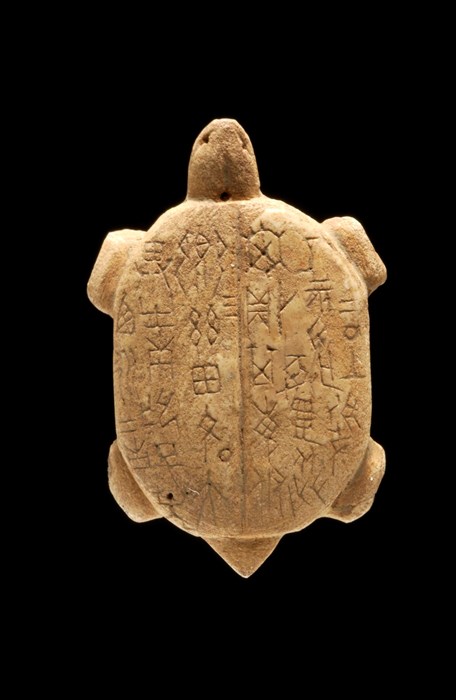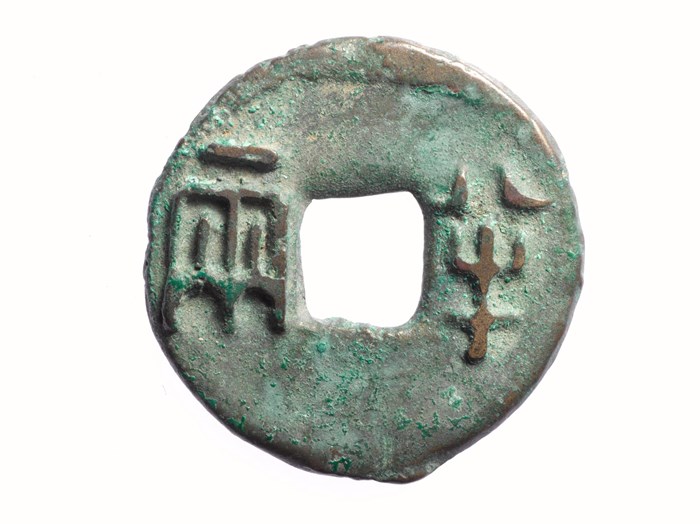Hey all!
Wow – I’m super glad you’ve made it to this first post. If you’ve gotten the chance to browse around the couple pages on my blog thus far, you will have seen that we will be focusing on the art of calligraphy. Keep an eye out for further developments where I will describe a step-by-step (but pretty general overview) of its complicated history.
Today, we are going to take a look at calligraphy’s not-so-humble beginnings, starting across the Pacific in China during the Shang Dynasty (1600-1046 BCE).
Ancient China saw a diverse culture often tied to the religious or mystic. This influence also impacted the development of language and its expression in the written form. Early logographs (i.e. characters or symbols which represent something) were derived from cultural practices that attempted to tell truths about the future. “Oracle bones” were the first true medium that logographs were applied to in a way that connected people to written language in society . To employ the practice of divination, animal bones (most often from an ox) and tortoise shells would be broken and characters would be written along the cracks. This would determine a sought-after answer. Recent discoveries of scrawl-covered bones show that they cover all types of topics – making divination on the bones perfect for people to choose to find out about luck in partnerships, war, or the weather.

Fig 1. National Museum of Scotland. Chinese Oracle Bones.
The logographs themselves are written in what is commonly referred to as “oracle bone script.” In Chinese, it is known as jiaguwen. This script has many interesting characteristics that are shared by its descendants, including the basic idea that certain parts of one logograph can be applied to many to underscore a type of shared meaning. In Mandarin Chinese today, we see this with the use of different radicals added together to create new meanings! Late-stage oracle bone script also featured indications of phonetic sound beyond pure symbolism.

Fig 2. Tao, Hanqing. A Radical-Aware Attention-Based Model for Chinese Text Classification.
In comparison to its descendants, the oracle bone script was more simplified so that people could have an easier time physically writing and carving the script into the ox bone and shells. Of course, this simplification is also due to the fact that oracle bone script was one of the earlier forms of logographs initiated around the world. The characters used in the divination ceremonies would either be isolated to depict a specific meaning or paired up to suggest a new message.
The physical strokes and stroke order that traditional script writing utilized had extreme significance. The brush or tool taken to the medium was expected to be fluid in application, with curved lines and a lack of adherence to an unyielding and stiff structure. Perfect symmetry is not what you would see by taking a look at any recent find. If you observe this sample from the late Shang Dynasty that currently resides in the Penn Museum, you might take notice of the fact that the characters are not without flaw but are perfectly able to convey meaning to the right observer.
The widespread prevalence of the oracle bone script birthed more modern developments like the famous bronze-ware from the (same) Shang dynasty. This bronze-ware prompted a huge shift from preliminary characters to more defined calligraphy techniques that have been preserved into today. During the later portion of the dynasty, bronze materials were the medium of choice for a new script dubbed jinwen. This script’s introduction brought forth elaboration on the original oracle bone script. Jinwen‘s logographs were similar to those of its predecessor but instead fashioned intricately with closer attention to aesthetic appearance. The use of calligraphy in ceremonial affairs continued with this script as it was often used in ritualistic offerings to the heavens.

Fig 3. National Museum of Scotland. Chinese Oracle Bones.
China saw multiple editions of oracle bone and jinwen scripts be revised and standardized in the dynasties that followed. Greater unification of the country favored wider use of more consistency in decorative writing. As the years went on, new versions of written Chinese with a certain form and connotation were developed for use by those in society who held specific positions. Lishu was used by clerks commonly in the Han dynasty (206 BC-AS 220), and the “regular script” or “standard script” was required in the Tang dynasty (619-907 AD) for those engaging in civil service examinations. The Chinese language as a whole went through thousands of years of history before arriving at its fascinating current stage with multiple dialects and forms.
The contributions of China to the art of calligraphy as well as the worldwide development of written language among modern civilizations should by no means be oversimplified. As always, we have the people of the past to thank for the society we have today. It is important to recognize the work of the people who came before us as we come to learn about a topic.
Thanks for learning about one of the origins of calligraphy with me today!
Your blog topic really interests me. I have never thought about how a form of writing could have such deep history and date back so many years. It is so cool how far writing and communication have come. The things people used to need to communicate about were so simple and only needed a few characters or symbols. Your blog allows it’s readers to put the timeline of writing into perspective which is something people don’t normally even think about.
This is definitely a blog I look forward to reading more about! Calligraphy writing is topic that is completely foreign to me and I have never learned about before but am excited to now! It is so crazy how animal bones and tortoise shells were used for communication. It makes me so happy to see that translated into the modern Chinese language today and it is also just so cool! I agree with you that it is so important to recognize the work of our ancestors!
I think you blog topic is really cool. I personally love to do calligraphy writing but I can tell you that I know absolutely nothing about the history of calligraphy or the stories behind the lettering. I really liked how you included the diagram of the different characters, it was cool to see how the Glyph, Chinese, and English all lined up. I felt that you explained the origins in a way that was easy to follow, and kept things interesting.